Biases in Forensic Testing: Influences from the Media
Forensic Science is the application of the scientific method and principles in the criminal justice system, regarding criminal and civil court. The application of forensic science in the court system is an essential part of the criminal justice process. Through various forms of forensic investigations, forensic evidence can produce objective and reliable information to support legal proceedings and investigations by helping establish the identity of a suspect or material found at a crime scene. When forensic testing is conducted, the purpose is to establish facts about the crime and create informed decisions based on objective evidence. However, such as any form of research, there is the chance of biases and inconclusive results. One rise in biases may be due to the extensive nature the media may cover a trial on the news. When people hear the words “media” and “courtroom,” the focus is primarily on the effect media coverage may have towards an impartial jury. Most concerns regarding extensive media coverage fall under whether it may cause the jury to be swayed towards the prosecution or the defense. What is not realized is that media coverage can also have an effect on those conducting forensic testing of evidence when it may be pertinent to the trial.
Media coverage can have a significant influence on the accuracy and objectivity of forensic testing results, which may compromise the integrity of the criminal justice system. In some cases, when there is significant media coverage, there is a chance when those in charge of testing forensic evidence may develop biases, potentially leading to contextual bias and an inaccurate analysis. This bias can have significant consequences for the criminal justice system, leading to wrongful convictions or acquittals, and undermining public trust in the fairness of the system. To ensure there is limited biases, it is essential to develop procedures to ensure fair and objective legal outcomes and mitigate influences from external sources that may hinder the integrity of forensic testing. Although media coverage is used to bring attention to a case and relay information to the public, it may bring unintentional negative effects to the court proceedings by developing pre-conceived notion and social pressure to the analyst during forensic testing, straying away from any objective truth in the case.
In a report to the president, during the Obama Administration, the President’s Council of Advisors on Science and Technology (PCAST) conducted a literature review to cover two important gaps: the need for clarity about the scientific standards of the validity and reliability of forensic methods and the need to evaluate specific forensic methods to determine whether they have been scientifically established to be valid and reliable.1 When discussing the scientific validity as a foundation for expert testimony, they emphasized the role of the judge is to evaluate the validity behind the methodology and reasoning behind each testimony. This can assist in decreasing the influence of biases in the courtroom and dismiss forms of invalid forensic analysis. Although biases and errors in analysis can be simplified to human error and is common in most professions, such errors are crucial to be identified and revised when it comes to the innocence or conviction of a person’s life. Through extensive external information and the presence of media coverage in the courtroom, pressure can rise towards the analyst and lead to such errors and leave some information to be overlooked when evidence is tested. This paper will go over the negative potential and biases that extensive media coverage in the court has on expert forensic analyst on their decision-making capabilities when conducting forensic testing. Allowing media coverage to alter the notions of forensic scientists may result in injustice towards the victims and can create distrust to the public towards the legal system. Solutions for eliminate such errors is not a simple issue that can be solved, yet there are ways to limit biases and minimize human error. Through reformed procedures, the reduction of biases can occur regardless of the extent of media coverage, due to the established methods to validate evidence.
What is Forensic bias?
Forensic testing is often viewed as a reliable and objective source of evidence in criminal investigations. However, as with any scientific testing, there are potential sources of bias that can impact the accuracy and objectivity of the results. Biases can arise at various stages of the forensic testing process, from the collection and analysis of evidence to the interpretation of the results. These biases can be intentional or unintentional and can stem from a variety of factors, including personal beliefs, cognitive processes, and contextual information.
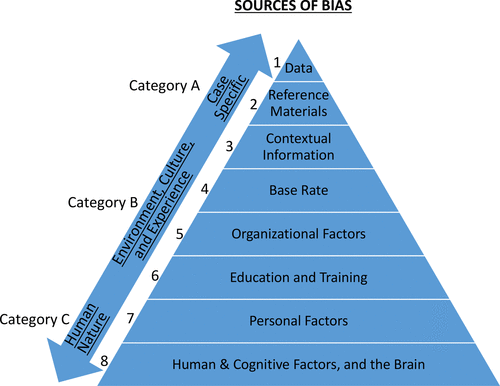
One common source of bias in forensic testing is confirmation bias. This bias refers to the tendency to interpret evidence in a way that supports pre-existing beliefs or hypotheses. In forensic testing, confirmation bias leads forensic analysts to subconsciously align their interpretations of evidence with preexisting theories, rather than focusing on finding the truth.2 This can be especially problematic in cases where the stakes are high, such as those involving serious crimes or high-profile individuals. Contextual expectations not only impact data collection and testing strategies, but also the interpretation and conclusion of the analysis. As a result, it is important to ensure that forensic testing is conducted objectively and without bias, using blind testing methods or other strategies to minimize the impact of confirmation bias.
Another source of bias in forensic testing is contextual bias. Contextual bias refers to the influence of extraneous information on the interpretation of evidence. This bias can arise when investigators are given information about the case that is not relevant to the evidence being tested. For example, in the forensic context, irrelevant contextual information has been shown to impact data collection at the crime scene, as well as biases in laboratory DNA analysis.3 In addition, potential words used to describe the context of the crime may lead to the analyst to work towards a specific conclusion than follow protocol and derive a conclusion of their own. To minimize the impact of contextual bias, it is important to limit the amount of extraneous information that analysts are given and to ensure that the information that is provided is relevant and reliable.
It is essential to recognize the potential for biases in forensic testing and to take steps to minimize their impact. Although biases may be unintentional, there are ways to combat any instances of biases arising in forensic testing. This can include implementing policies and training programs to help investigators and analysts recognize and address biases, as well as using objective and transparent methods for collecting, analyzing, and interpreting evidence. By doing so, we can ensure that forensic testing remains a reliable and valuable tool in the pursuit of justice.
Study on Bias and How to Correct it
A research article by Dr. Dror and Dr. Hampikian focused on the integrity of DNA evidence based on contextual bias. Since DNA evidence is known to be the most objective and consistent form of evidence in the court room, there are minimal chances of biases to be made when conducting DNA analysis. However, in their study, they used mixture DNA analysis from a real adjudicated criminal case and presented it to 17 independent analysts without any contextual case information. Their goal is to determine whether the DNA found at the scene would exclude the suspects that were named from a cooperative assailant. From there, they assessed whether the 17 analysts were able to come to the original conclusion of the DNA mixture regarding a sexual assault case compared to those who examine the DNA mixture with extraneous context of the case. This assessed the bias ability of the DNA and determined if the use of extraneous information will lead to a biased conclusion. Ultimately, their results were unable to support their hypothesis due to varying conclusions from the 17 analysts. Of the 17, only one analyst had the same conclusion similar to the original analyst, whereas the others produced conflicting conclusions. The observed inconsistencies within the 17 examiners who conducted their analysis on the identical evidence, context free, demonstrated subjectivity in DNA mixture analysis, which may reflect individual differences, such as training, experience and motivations.4
Interestingly enough, for the analysts that were not given contextual information, they did not reach the same conclusion of the DNA mixture regarding the suspects in the case as the original conclusion of ‘not to be excluded’. The goal of the study was to determine if analysts with prior experience in DNA analysis can reach an objective conclusion, because DNA should be the most objective form of evidence. However, it was demonstrated that DNA analysis may be subjective in regard to the analyst themselves because of personal interpretation of the evidence. For DNA, known as the golden standard of forensics, it brought 17 different analysts to conclude that the DNA mixture is either inconclusive or may exclude or include the suspects to the mixture. In other forms of testing such as physical evidence that should follow consistencies for it to be a technical match, more biases can be discovered than in DNA testing.
Many forensic identifications are based on matching a visual pattern left at a crime scene and one from a suspect. The way bias may influence an inconclusive match is if the analyst has a conclusion that they are working towards. In a commentary study, the “filler-control method” was used by Dr. Wells and his colleagues to address issues from the National Academy of Science (NAS) regarding the subjectivity to contextual bias occurring to forensic analysts in their testing. This method could address the estimate error rates for both the technique and the individual analyst, help calibrate forensic analysts, quickly jettison fraudulent analysts and junk science and protect against contextual influences.5
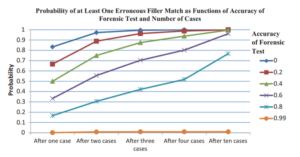
The way the method works is slightly different than a traditional way an analyst will work on matching physical evidence from the crime scene and that of the suspect. The filler-control method brings extra samples to the analysts as filler samples, and it is the analysts’ job to identify the true sample from the collection that is most consistent with the sample found in the crime scene. Through this method, it will assist in eliminating the contextual bias of using prior information or extraneous information to sway an analysis towards a specific conclusion. This will allow for the analyst to prove themselves in their forensic techniques and determine if they are straying away from any form of biases. Additionally, contextual information would render insignificant if using the filler-control method because it would rely that the analyst can determine which sample is the true sample from the scene based on correct methodology.
How the Media plays a role in biases
One key factor that may lead to biases in forensic testing would be the cases that obtain high-profile media coverage. Such trials cause the media to produce multiple news articles regarding the case with minimal background information on the case and the evidence. This leads the media to construct their own interpretation of the case and bring false claims towards those involved in the case. Media coverage of high-profile cases can also affect forensic analysts’ objectivity and lead to biases in their interpretations of evidence. Such biases can compromise the accuracy of their analysis and testimony in court.
Perceptual biases are defined as beliefs, forces, or actions which influence an observer’s perception of an event such that the observer’s representation is inconsistent with the factual event. One may think that an analyst, testing the evidence themselves, may lead them to a concrete factual conclusion, yet as shown by the study of the DNA mixtures from Dror and Hampikin, there are still instances where biases may cause different conclusions from other analysts. Paul Lees-Haley and Richard Brown, in their article, Biases in Perception and Reporting Following a Perceived Toxic Exposure, focus on how perceptual and response biases can occur despite having evidence stating the opposite. The focus of the article is on populations that report phantom symptoms from toxins, where there has been no evidence of such toxins in the area. In their study they quote Funkhouser (1973) “in an assessment of public opinion and media agenda setting, there is a substantial relationship between press coverage of specific events and public concern for these events, but not between either public opinion and public concern for these events, but not between either public opinion or media coverage and objective measures of reality.6 In other words, public opinion and media coverage may at times be consistent with each other yet fail to follow the objective measure of reality.
The OJ Simpson Case – How the Media and Forensic Evidence Collide
A well-known example would be the televised case of American former football running back and actor, Orenthal James (O.J.) Simpson. During the trial, that lasted more than 8 months, the media almost exclusively covered the entirety of the case from within the courtroom. Around the time Simpson was arrested in June of 1994, cameras in the courtroom were still a relatively new development: in 1981, the supreme court ruled that states could pass laws allowing cameras in, which many did in the years leading up to the Simpson case.7 The judge of the trial, Judge Lance Ito, who was originally critical of cameras in the court, allowed for the trial to be televised from within the courtroom leading to a frenzy of news outlets to be allowed to broadcast the trial. The intensity of which the media covered the news made it hard for the viewers to find any other type of news in other stations. Ted Koppel, Anchor and managing editor of ABC’s Nightline, spoke about the number of times they produced news on the trial by stating, “I remember that we tried to avoid doing it too often, and we couldn’t avoid doing it almost once a week… we covered the O.J. Simpson case in part because there was huge public interest.”8 News outlets, reaching for viewers, seemed to follow the public interest and keep broadcasting the trial to its conclusion for fear of falling outside the cultural loop. As a result, the courtroom was filled with unnecessary tension for those involved, having cameras capture their every move.
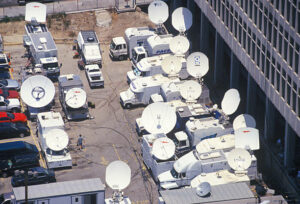
The trial began on January 24, 1995, of the murder of Simpson’s ex-wife, Nicole Brown Simpson, and Ronald Goldman on June 12, 1994.9 The key forensic evidence used in the case was the DNA found in multiple instances in the crime scene. For this case, the use of DNA evidence was fairly new in the criminal justice system, and it was not well regulated in the collection and analysis for forensic evidence. DNA analysis, when first introduced to the courts, beginning in the late 1980s, was hailed as infallible; but the methods used in early cases turned out to be unreliable. Testing labs lacked validated and consistently applied procedures for defining DNA patterns from samples, for declaring whether two patterns matched within a given tolerance, and for determining the probability of such matches arising by chance in the population.1
Being the case, the DNA evidence in the trial may have been more crucial in the verdict of OJ, had it not been mishandled prior to forensic testing. The prosecution’s experts all acknowledge that DNA degrades rapidly when blood samples are left in a moist, warm environment, that degradation can render the DNA originally in a sample untypeable, and that subsequent contamination of such a sample by a second person’s DNA can cause it falsely to match the second person on a DNA test.11 As a result, this caused inconclusive results in testing, leading to a failed control group during the assay in which mixture of DNA from Goldman and OJ was tested, which became easier to discredit the DNA evidence and contributed to the non-guilty verdict.
It can be inferred that the extensive media coverage and exposure of the case in different news outlets for the case caused unnecessary stress and social pressure for those involved in the case. Such instances resulted in the collection of forensic evidence and analysis to be executed poorly due to the severity and high-profile nature of the case. In addition, given the early stages of DNA analysis, the methodology used in current cases was not yet established, causing the assay of DNA to produce inconclusive results. In the case of OJ Simpson, perceptual bias seemed to have played a role in the submission of evidence to the court, yet human error caused the significance of the DNA evidence to be inconclusive.
Regulating the Media vs Regulating Forensic Analysis
It is evident that the media has a significant influence towards the public opinion and how simple it can be to create a narrative through the media. The lingering issue regarding the media and influences of bias is that restricting media access to public events, like court trials, can led individuals to believe their first amendment is being violated. The freedom of press and speech allow for individuals to spread the truth and speak out on events that occur in society. There is no easy way to go about regulating how the media portrays ongoing trials, nor is there a way to censor parts of the case that may affect those involved.
The only form of regulation found in court proceedings would be from the European Convention on Human Rights, stating, “Judgment shall be pronounced publicly but the press and public may be excluded from all or part of the trial in the interest of morals, public order or national security in a democratic society, where the interest of juveniles or the protection of the private life of the parties so require, or the extent strictly necessary in the opinion of the court in special circumstances where publicity would prejudice the interest of justice.” To state simply, the court has stated that an extremely negative press campaign during a criminal case may affect the fairness of the trial and the impartiality of the jury.12 In this regard, there is some form of limitations on the press, however, excluding words of defamation and providing general information that may lead the viewer to feel one way towards the other can still be a source of negative press. Media coverage of trials should stick to an objective approach of portraying the trial, allowing for individuals to educate themselves in the case without being forced to sway at one side or the other.
Another way to go about this issue would be through regulation of forensic analysis and correction of procedures. As shown before with Dr. Wells publication on the forensic filler-control method, there are studies being made to find ways to decrease sources of bias in forensic analysis and eliminating any influences from extraneous information. Aside from this practice, other practices should be implemented and enforced when observing forensic evidence. Such examples would include blind testing, where an examiner is not aware of the identity of the suspect or the context of the case. In some instances, the first examiner is not validated by a second examiner by determining if the results can be replicated. If we focus on the root of the issue, the focus can stray away from the media itself, and can be brought towards the role and expertise of the analysts themselves. By educating them and ensuring that their findings are accurately and objectively presented, we can provide better justice in the Criminal Justice System.
- Simoncelli, T. (2016). Forensic Science in Criminal Courts: Ensuring Scientific Validity of Feature-Comparison Methods. President’s Council of Advisors on Science and Technology, 1. Perma | obamawhitehouse.archives.gov. ↵
- Perez, J. (2015). Confronting the Forensic Confirmation Bias. Yale Law & Policy Review, 33:457, 459. Confronting the Forensic Confirmation Bias – EBSCO. ↵
- Dror, E. (2020). Cognitive and Human Factors in Expert Decision Making: Six Fallacies and the Eight Sources of Bias. American Chemical Society, 92, 7998-8004. Cognitive and Human Factors in Expert Decision Making: Six Fallacies and the Eight Sources of Bias (acs.org). ↵
- Dror, E., & Hampikian, G. (2010). Subjectivity and Bias in Forensic DNA mixture interpretation. Science & Justice, 51(4), 204-208. Subjectivity and bias in forensic DNA mixture interpretation – ScienceDirect. ↵
- Wells, G., Wilford, M., Smalarz, L. (2013). Forensic Science testing: The forensic Filler-control method for controlling contextual bias, estimating error rates, and calibrating analysts’ reports. Journal of Applied Research in Memory and Cognition, 53-55. Forensic science testing: The forensic filler-control method for controlling contextual bias, estimating error rates, and calibrating analysts’ reports. – EBSCO. ↵
- Lees-Haley, P., Brown, R. (1992). Biases in Perception and Reporting Following A Perceived Toxic Exposure. Perceptual and Motor Skills, 75, 531-544. Biases in Perception and Reporting following a Perceived Toxic Exposure (sagepub.com). ↵
- Raptopoulos, L. (2014). The OJ Simpson Case 20 Years Later: Making ‘trials into television’. The Guardian, Retrieved from: The OJ Simpson case 20 years later: making ‘trials into television’ | Law | The Guardian. ↵
- Rating the Media’s Performance. (2005). Frontline PBS. Retrieved from: Analysis – Rating The Media’s Performance | The O.j. Verdict | FRONTLINE | PBS. ↵
- Editors of Encyclopaedia Britannica. (2023). O.J. Simpson Trial. Britannica. Retrieved from: O.J. Simpson trial | Summary, Lawyers, Judge, Dates, Verdict, & Facts | Britannica. ↵
- Simoncelli, T. (2016). Forensic Science in Criminal Courts: Ensuring Scientific Validity of Feature-Comparison Methods. President’s Council of Advisors on Science and Technology, 1. Perma | obamawhitehouse.archives.gov. ↵
- Thompson, W. (1996). DNA Evidence in the O.J. Simpson Trial. University of Colorado Law Review, 76(4), 827-858. Law Journal Library – HeinOnline.org. ↵
- Fair Trials International. (2012). A Guide to The Risks of Media Coverage in Criminal Cases – And How to Manage Them. Oak Foundation, 1-5. YDN-Guide-to-media-coverage-FINAL.pdf (fairtrials.org). ↵
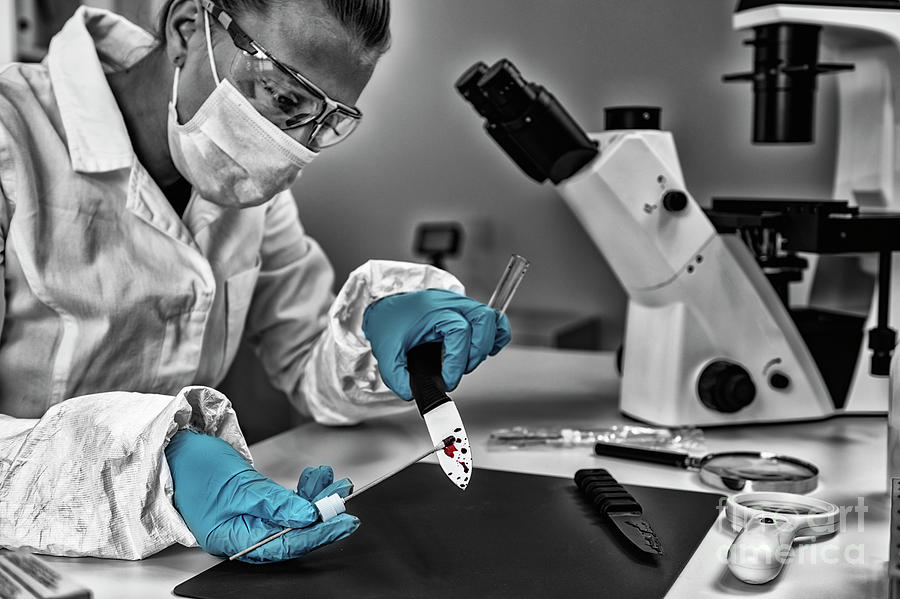

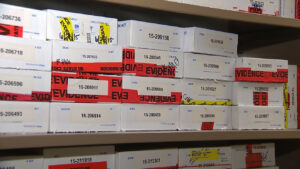
3 comments
Natalia De La Garza
Thank you so much for providing this information it’s incredibly insightful and well-structured!
Andrew Ponce
Articles like this are very beneficial for the reader since it is one where it is very easy to tell how much effort went into it. The sections that subdivided make it very clear and concise for the reader to easily follow through. The topic of the article itself is one that is very modern relatable. Many people already understand forensic studies; however, not many people understand the way it is evolving with modern technology and how biases are being created. This article flags the current issues and identifies them for the reader to understand.
Gaitan Martinez
Social media in general affects so much in a positive and a negative way. It could spread good news and bad news, and I can see why this article would want to bring attention to media affecting forensic science. Forensic science when deduced is 100% reliable and is an actual fact, while social media easily spills out info without the facts. Sometimes it could be intentional, and other times it’s by mistake, but the overall goal is to get attention to a certain subject.